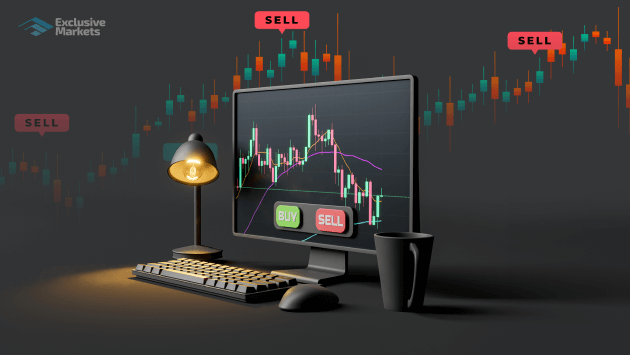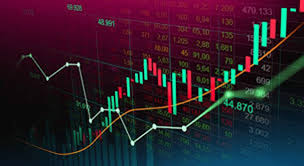
In the world of Forex trading, making informed decisions is key to success. The best indicators can guide traders in understanding market trends and making predictions. If you’re looking to enhance your trading strategy, check out best indicators for forex trading Trading Platform VN as a reputable resource. This article explores some of the most effective forex indicators, detailing their uses, advantages, and how they can be integrated into your trading approach.
Understanding Forex Indicators
Forex indicators are mathematical calculations based on the price, volume, or open interest of a currency pair. Traders utilize these indicators to evaluate market conditions and to formulate trading strategies. The right indicators can provide insights into possible price movements, helping traders to make educated decisions.
Types of Forex Indicators
Forex indicators are generally categorized into two main types: leading indicators and lagging indicators.
1. Leading Indicators
Leading indicators are designed to predict future price movements. They signal potential reversals or continuation in trends before they happen. Some common leading indicators include:
- Stochastic Oscillator: This indicator compares a particular closing price of a currency pair to a range of its prices over time. It moves between 0 and 100, indicating overbought and oversold conditions.
- Relative Strength Index (RSI): RSI measures the speed and change of price movements, providing a score between 0 and 100. An RSI above 70 indicates that the asset is overbought, while a score below 30 suggests it is oversold.
- Moving Average Convergence Divergence (MACD): MACD shows the relationship between two moving averages of a security’s price. Traders look for crossovers, divergence, and rapid rises/falls to forecast future price movements.
2. Lagging Indicators
Lagging indicators follow existing market trends and help traders confirm price movements. Here are a few popular lagging indicators:
- Moving Averages: The simplest type of lagging indicator, moving averages smooth out price data to identify the direction of the trend over a specific period.
- Bollinger Bands: This indicator consists of a middle band (simple moving average) and two outer bands set two standard deviations away. It helps identify volatility and potential price breakout points.
- Average True Range (ATR): ATR assesses the volatility of a currency pair by measuring the range of price movement over a designated period. A high ATR indicates high volatility and vice versa.
Choosing the Right Indicator
Selecting the right indicators depends on several factors, including your trading style, the currency pairs you are trading, and the timeframes you prefer. Here are some tips to consider:

- Know Your Trading Style: Day traders may rely more on leading indicators for short-term movements, while swing traders might prefer lagging indicators to confirm trends over several days.
- Test Multiple Indicators: It’s essential to experiment with various indicators to see how they fit within your strategy. Combining indicators can enhance your understanding of the market.
- Maintain Simplicity: Avoid cluttering your charts with too many indicators. A few well-chosen indicators can provide clearer signals without causing confusion.
How to Use Indicators Effectively
Using indicators is not just about following the signals they provide; it’s essential to understand how to interpret and implement them in your trading strategy. Here are some strategies for effectively using indicators:
1. Setting Alerts
Many trading platforms allow you to set alerts based on specific indicator levels. This feature can help you react quickly to market changes without constantly monitoring price charts.
2. Backtesting Strategies
Simulate your trading strategy using historical data to see how your chosen indicators would have performed in the past. This practice can help validate your methods and refine your trading approach.
3. Keeping Up With Market News
Indicators can provide a technical perspective, but it’s essential to stay informed about macroeconomic developments and news events that may impact the forex market. Incorporate fundamental analysis with technical indicators for comprehensive insights.
Common Mistakes to Avoid
Even experienced traders can fall into traps when using indicators. Here are some common pitfalls to avoid:
- Over-reliance on Indicators: It’s easy to become too dependent on indicators without considering broader market context. Always maintain a holistic view of market conditions.
- Ignoring Time Frames: Be mindful of the time frames you are working within. An indicator may give a buy signal on one time frame but indicate a sell signal on another.
- Not Adapting to Changing Markets: Market conditions can shift rapidly. Ensure that your indicators remain relevant and adjust your strategy accordingly.
Conclusion: Crafting a Winning Forex Strategy
The best indicators for Forex trading are those that align with your unique trading style and provide clarity in decision-making. Mastering these tools, combined with discipline and continuous learning, can significantly enhance your success in the forex market. Always remember to stay informed, test your strategies diligently, and adapt to market changes for the best outcomes.
In conclusion, using indicators is an art that, when done thoughtfully, can lead to consistent trading performance. Build a trading plan that leverages the strengths of various indicators while maintaining simplicity and clarity to optimize your trading experience.
